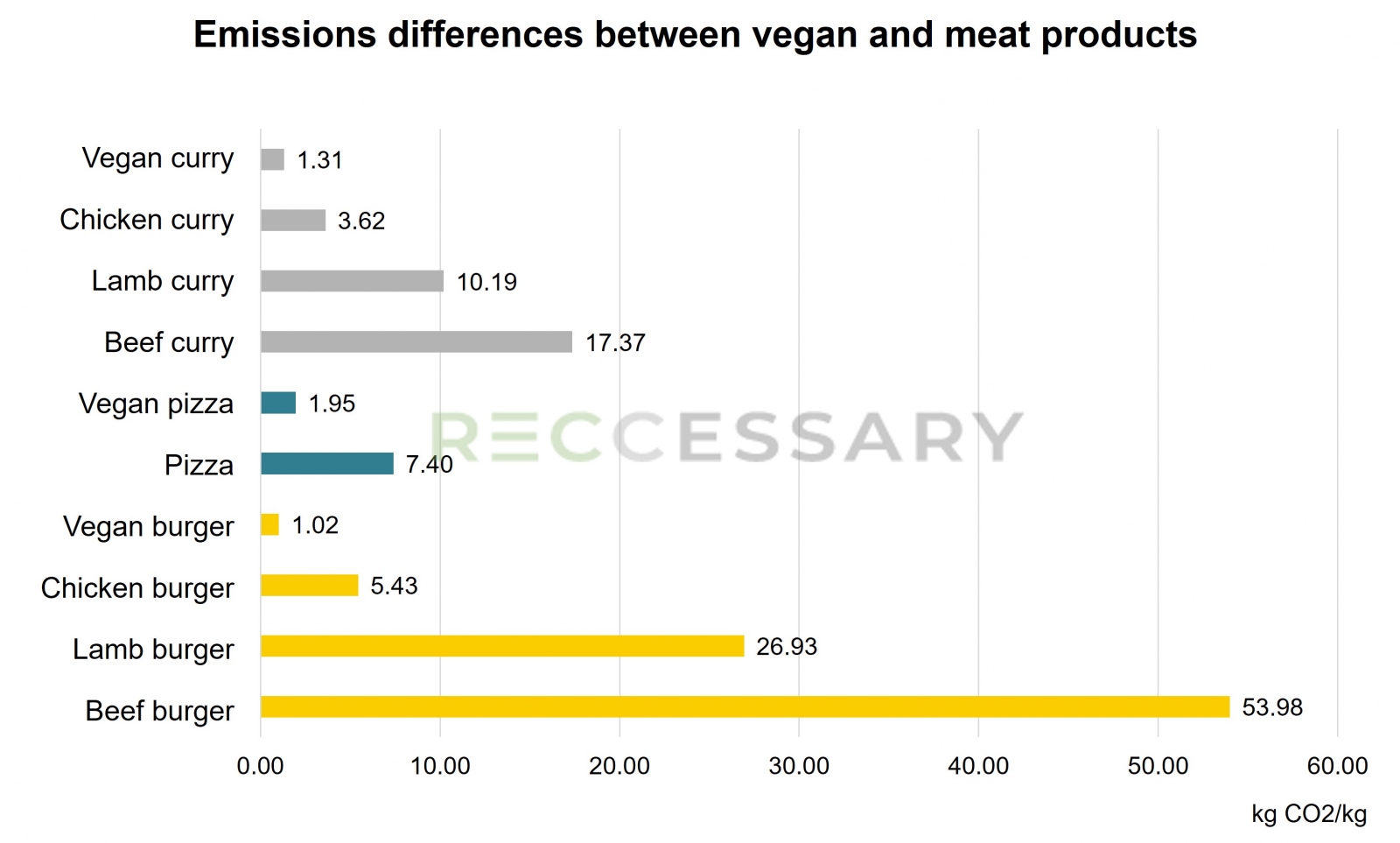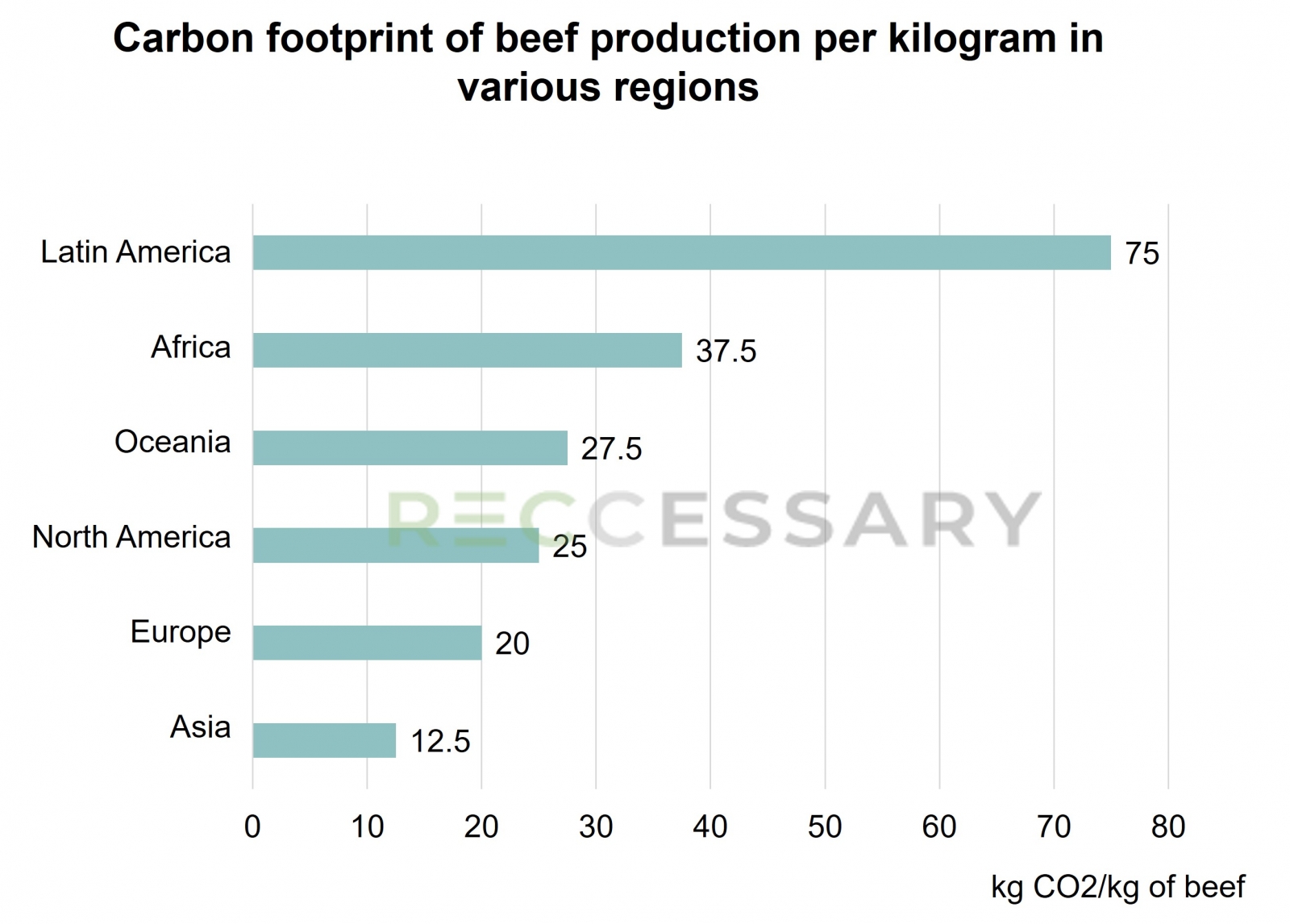The global food supply chain accounts for 26% of total greenhouse gas (GHG) emissions, including land use, freshwater withdrawal, livestock farming, and transportation. As environmental awareness grows, the carbon footprint of food products is gaining significant attention, which will potentially change the industry's path and the public's eating habits, making either the choice of production location, product optimization and transformation, or process improvement a risk or opportunity for the industry.
Carbon footprint of food
With the boom in global trade, dietary choices have diversified. In the past, people may have prioritized satiety and the nutritional value of food. However, as awareness of carbon reduction grows, more and more consumers are taking the carbon footprint of their food into account. Figures 1 and 2 below show the relationship between food types and carbon footprints, with production, processing, transportation, packaging, and retailing included in the calculation of emissions.
Figure 1 shows the emissions from common meat and fish, with beef undoubtedly topping the list. 56% of the emissions from beef production come from methane contained in gases released by cattle, which has a greenhouse effect equivalent to 25 times that of the same volume of CO2. The second-largest source of emissions, accounting for 23%, is the change in land use. Since raising cattle requires larger areas of farmland compared to other livestock, companies cut down massive forests to create land. As a result, carbon dioxide stored in trees, plants, and soil is released into the atmosphere, making emissions from beef much higher than from other meats. Following beef, the emission levels of other meats in descending order are lamb, pork, seafood, and chicken. It is worth noting that emissions from vegan meat products are significantly lower than those from other meats, with a difference of ten to one hundred times.
Figure 2 shows that if common food like curry, pizza, and burgers are made with plant-based ingredients, their emissions can be reduced by at least three times. Due to the effectiveness of carbon reduction, the global vegetarian population has been increasing rapidly in recent years, creating huge business potential for a "meat-free economy."
Figure 1. Carbon emissions from per kilogram of fish and meat1
.jpg)
Figure 2. Emissions differences between vegan and meat products

How production location affects the carbon footprint of food
In addition to food types, the production location also leads to differences in carbon footprint. For example, beef production in Latin America has the highest GHG emissions in the world (see Figure 3 below). This is not attributed to differences in cattle breeds, but rather to differences in land use practices. In Europe and North America, 80% of beef production is accompanied by the production of other dairy products, which means that the environmental costs are shared by both.
Additionally, cattle in these production sites are mostly fed grain and feed, which significantly reduces the use of land. In South America, however, most of cattle are grass-fed, with only 30% accompanying dairy production. In addition, many of the region's large pastures have been degraded, requiring operators to cut down more forests to raise cattle, leading to increased carbon emissions. Apart from the example of land for beef production, electricity, transportation methods, and fresh water resources also affect the carbon footprint of the life cycle of food. Therefore, it is necessary to consider carefully the production methods and locations of all types of food in the future.
Figure 3. Carbon footprint of beef production per kilogram in various regions

Turning challenges into opportunities
Changing eating habits amid the carbon reduction trend is a challenge for the food industry, but it can also be an opportunity. Food companies should be more aware of their sources of emissions to reduce carbon footprints and take advantage of this eco-friendly trend. For example, the main sources of emissions in the production of fruits and vegetables often come from the transportation and waste phases, with each accounting for 30%. Therefore, implementing intelligent yield control or choosing environmentally friendly transportation methods may be the most efficient ways to reduce carbon emissions. In the case of tofu production, most of the carbon emissions come from the processing phase, which requires a large amount of water that is difficult to penetrate the ground and be reabsorbed. This makes the proper treatment of wastewater a key issue for companies.
To respond to the carbon reduction trend, food companies need to take action to calculate the carbon footprint of their products, understand the global competitiveness of their product emissions, and optimize (cut emissions) or transform (e.g., enter the meat-free market) to stand out in the new competition.
1 Source: Poore & Nemecek